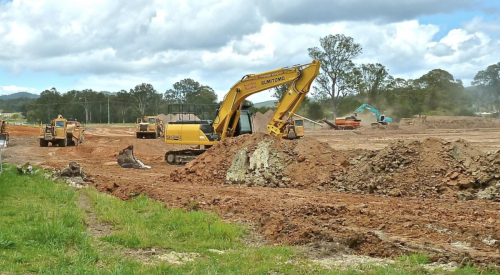How do you decide what the prices should be on the homes you build? For the vast majority of builders, the answer is some cost-based formula that leads to a desired profit margin. Trouble is, that logic defies an age-old axiom: You can lead a horse to water, but you can’t make him drink.
“Buyers decide what they are willing to pay for a house,” management consultant Chuck Shinn says, “and they base their decision on the value they see in the product, not on the builder’s costs. If you buy land poorly and build houses inefficiently, cost-based pricing can lead to over-priced houses that won’t sell. We still see that a lot. But today we also see underpricing because cost-based models don’t take into account the constant movement of supply and demand in the marketplace or the escalating value of a location.”
|
Cost-Based Folly
Shinn, president of the Colorado-based Lee Evans Group, estimates that 80% of builders use cost-based pricing formulas. Sometimes they work, he says, but only because the prices fall, by chance rather than design, in the range where the market sees value. Shinn counsels that a better approach is to find the product the market favors on a particular site — through diligent market research — and the price the market will pay for that product, even before closing on the land.
“Once you figure out what the market will pay for the houses, then you can work your way back through a costing model that will lead to the price you can pay for the land without jeopardizing your targeted profit margin,” he says. “If land values appreciate between the time you buy the land and the opening of sales, you can bump up prices and take that money to the bank.”
Shinn says builders should pay 20% of the sales price for the finished lot, 3.5% for indirect construction costs, 6% for marketing, 4% for financing, 4.5% for operating expenses and .5% for warranty. If cost slippage is held to 1.5%, that allows a 10% profit as long as direct construction costs are held to 50% of the sales price. “Some of my high-profit clients are holding direct costs to less than 50%, but most of the industry is operating at between 56% and 62%,” Shinn says. “You can’t adjust your sales price based on cost. The market sets that. You have to manage costs to protect your margin.”
Velocity Versus Margin
Production home building is a different ballgame from that played by most small builders. Production builders can factor velocity into their pricing equations. Because they build more houses in a single location, production builders often can sell and build houses fast enough to bring the manufacturing and retailing concept of inventory turns into play. Scott Smith, president of Great Western Homes in Mesa, Ariz., will sell 700 houses this year for about $100 million in revenue. He explains how that level of production affects pricing:
“There are two ways to make money in this business,” he says. “High margins and low inventory turns [the way most small builders operate] is more like a furniture store. But high-production builders often go for low margins and high turns, like a supermarket. They’re looking at return on investment. They’ve got debt on the land and a small equity investment. They can sell at a 5% margin and still hit 30% return on the subdivision if they can get in and out fast. Velocity is what they care about.”
Great Western sells houses priced from $90,000 to $490,000 but now focuses on the entry-level and first move-up segments, so velocity is a prime consideration.
“The Phoenix market is very competitive,” Smith says. “Nine of the 10 largest public builders in the country are active here. Sometimes they change from a margin-based to a velocity approach overnight, in the middle of a development, if they need numbers to meet Wall Street’s expectations for the quarter or year. We have to be nimble with our pricing to meet that competition. Sometimes we price the same house $15,000 differently in projects only five miles apart, and that is based on competitive pressures, not cost differences.”
This can be a problem for small builders because it’s getting harder to avoid the competition of high- production builders, and buyers look for value. They care about what they get for their money, not whether their house is built by a big company or a small one.
“Time and again my clients tell me, ‘What we’re building is unique. We have no direct competition,’” says Atlanta-based management consultant Mark Schickner. “My response is, ‘People have choices. You’d better look closely at what’s available in your market and put dollar values on the differences between what they have and what you offer. You’d better do it because I guarantee that your customers do.’”
Schickner uses a market comparison form to measure much more than price per square foot when shopping competitive developments. “We put down the features of each home, then assign dollar values to everything included in the base price,” he says. “We also write down what they charge for popular options and upgrades. A lot of builders get an anecdotal feel for the market, but very few have a way to put down the numbers and track them over time.”
Price is a given before you start working on costs, Schickner says. “The art of pricing is having a feel for where the market is heading. There must be hundreds of stories about builders who priced on a cost-plus basis, opened for sale and were stormed by buyers. Depending on how many houses they sell before they adjust prices, they can leave millions of dollars on the table. And you never get that back.”
Limiting Sales
Schickner advises builders to limit the number of houses that can be sold on the opening sales weekend and the number of sales in any one plan. “Sometimes you miss the mark on one plan, and the market sees that and snaps it up,” he says.
He also advises a balance of premium and standard lots in each phase of a development. “Lot premiums are one of the hardest things to get right because every lot is unique and pricing against comparables in the market is much less precise,” Schickner says. “But they are also one of your best tools to adjust pricing as you get a feel for where buyers see value. It’s not a good idea to concentrate the premium lots in any phase. Ideally, you want to balance the pricing differential so premium and standard lots sell at about the same pace.”
For most builders, the right sales velocity is one that matches the pace of construction. California-based marketing consultant John Schleimer cautions that most builders are not set up to operate as high-velocity producers. “Selling the fastest does not mean you’re going to make the most money, “ he says. “There’s a minimum velocity you need to keep the construction operation running. Peak efficiency is somewhat higher. But beyond that, all you’re doing with higher velocities is creating production problems with sales that are leaving money on the table.”
Atlanta move-up master John Wieland Homes operates at a balanced production point, with goals for velocity as well as margin. “In the entry-level market, true low-margin production builders would probably take all the backlog they can get,” Wieland president Terry Russell says. “For most of us, we don’t want to sell faster than we can build, and we manage that by increasing prices until we meet sales resistance.”
Every builder should do a product positioning study before going to contract on a land purchase, Schleimer says. “You study what’s comparable to your product in the market and aim at the same buyers,” he says. “You analyze the strengths and weaknesses of your location against theirs, your product against theirs. If you have a superior location and carefully design a product with more appeal to the targeted market segment, it’s possible to price at a higher level.”
Most of the builders and consultants we spoke to cautioned against opening sales before model homes. “No more than 90 days before the models grand-open,” Schleimer says. “Sixty days is more like it. If you get a big swing in the market between the time you take a contract and the start of construction, you could leave $50,000 on the table. And if the swing goes the other way, the contract will wash out anyhow.”
Bradenton, Fla., builder Pat Neal concurs. “When I was a young builder, I had to pre-sell ahead of models to give the bank confidence I’d make my volume targets,” he says. “But I learned from that experience that I gave away a lot of money — sometimes all of the profit. So today I want to develop the land, complete all my amenities, then open my models before I sell anything. I still give a benefit to an early purchaser, but not as much as I used to.”
The consensus of builders interviewed also favors carefully managing prices to achieve an upward progression through the development. And each price increase should be announced at least two weeks in advance. That gives the sales staff a sequence of pricing plateaus to nudge fence-sitters toward a contract. “The agent can call and say there’s going to be a $1,500 price increase in two weeks, but if you get in here this week and sign a contract, you can make $1,500 in a week,” Shinn says.
“It’s important that prices climb steadily,” D.R. Horton CEO Don Tomnitz says. “We want our buyers to see that they’re achieving a substantial rate of appreciation in their homes. If you raise prices steadily, as you sell through each 10th of the project, by the end you’ve got nine-tenths of your buyers feeling really good and the last 10th glad they squeaked in.”
Horton’s policy is to raise prices every 10 sales and release lots one month’s production at a time. The firm is working hard on national purchasing operations, with a goal to create perceived-value advantages at every price point. “Half our revenues come from customization of base plans,” Tomnitz says. “That gives us a feel for what people want. When we buy in quantity, we reduce our costs to where we can offer custom quality at a base price. We’re doing that with cabinets. We offer a custom-grade cabinet as standard.”
At Great Western, “We never want to reduce prices,” Smith says. “We’ll add incentives if we have to, but dropping prices disenfranchises all the previous buyers and kills referral sales.”
|
||||||||||||||||||||||||||||||||||||||||||||
Markup Versus Margin
Another factor that gets builders in trouble is that too few understand the difference between markup and margin, so many underprice options and upgrades. Margin is calculated against sales price, markup against cost. “A 25% markup on cost is only a 20% margin on sales price,” Shinn explains. “To have a 30% gross margin on an option, a builder must mark up the installed cost by 42.5%. It’s something all retailers understand, but builders are notorious for not getting it.”
When production builders are especially efficient in buying land and building houses, it creates opportunities to do cute things with pricing to accelerate velocities and turn land inventories even faster. Pat Hamill, president of Oakwood Homes in Denver, is one of the best at sneaking perceived-value extras into base prices to speed up sales.
Rather than pricing against the competition of new home communities in the market, Hamill prices to beat the competition of existing homes. Building on low-cost land he has held for 10 years, zoned for apartments at 20 to the acre, Hamill soon will open a community of detached homes — at a density of 8 units per acre — with prices starting at $99,500, including concrete tile roofs.
“Two-thirds of the housing sales in our market are in the existing home inventory,” Hamill says. “They average $30,000 less in price than new homes. If you look at the median home price in Denver and the median income, you see a huge gap. We price to the median income with a new, modern product buyers can’t match in the resale market. Then we try to include some perceived-value extras that really turn on sales. To do this, you have to do everything well, from the land buy to achieving increased densities to value-engineering the product.”
To achieve this pricing, Oakwood no longer bids jobs. “We target where we need to be to get our pricing, then take that objective to our vendors and trades,” Hamill says. “We challenge them to come up with ideas about how we can do things differently to lower costs without sacrificing anyone’s margin. The key is simplicity. We’re designing great homes, but they are simple to build. They aren’t cheap. We focus on quality, value and energy efficiency because our buyers don’t have a lot of money to spend operating a home. But we build them quickly and efficiently, using panelized construction.”
Frank Foster, CEO of Fieldstone Communities in Southern California, says his firm always keeps a close eye on monthly payments when setting prices because most consumers do not think in terms of cash price. When you look at price that way, higher taxes or homeowners association fees can make a difference, he points out. “We make our bids on land based on house prices we see in the marketplace at the time,” he says. “We don’t buy land on the basis of what might happen in the future. If prices appreciate, that’s a good thing. It hasn’t gone the other way since 1995, but before that, we had five years of prices spiraling down.”
Foster reports that Southern California house prices are up 9% to 11% since the beginning of this year because of an acute housing shortage. Even though Fieldstone will build 550 homes in California this year, its pricing is aimed at slowing velocity. “We release lots in phases of 10, then adjust prices,” Foster says. “We want to sell between 1.2 and 1.4 houses a week in every location. That keeps us on our annual production targets. Below 1.2 a week, it’s expensive to carry the land. Above 1.4, it’s hard to keep up production. Why would we want to burn through land faster when all that would do is use up a scarce resource?”
Fieldstone’s pricing in Southern California runs from $320,000 to $550,000. “That’s not the high end of the market,” Foster notes.
While many high-production builders compete on price per square foot, a few semi-custom builders, operating in the high end of the pricing spectrum, carve out a competitive niche as design leaders. Hannah-Bartoletta Homes in Tampa, Fla., is one.
“Pricing is part science and part instinct,” Charley Hannah maintains. “Appraisals and MLS data for the surrounding market give you a feel for the right price. Then we look at velocities of past developments at various prices. But then you have to ask, ‘How unique is my product?’ If there’s something special about your houses and community, you may be able to get a little more in price than the comp data leads you to believe. Then you can be a market leader. The trouble with many builders is, they fall in love with their product and think it’s more special than it really is. The market has to decide that, not the builder.”
Hannah-Bartoletta doesn’t develop land, but its brand is strong enough, on the basis of design leadership, that developers pursue the firm to push velocity — even at a $500,000 price point. “I piss developers off all the time,” Hannah says. “They want to sell us lots because they know our reputation will allow them to charge more for the lots and increase absorption. But I insist that whatever increase in lot value our presence brings ought to go in my pocket, not theirs. The faster absorption ought to be enough for them.”
If you work back from market comps, through a costing model, to reach the base price the market wants on your houses, a builder can take many steps to tweak prices, such as increasing density or value-engineering to bring prices down slightly, or shooting for market leadership in design to draw a slightly higher price. Just don’t delude yourself that you control pricing. No matter what you do, the market has the final say.












